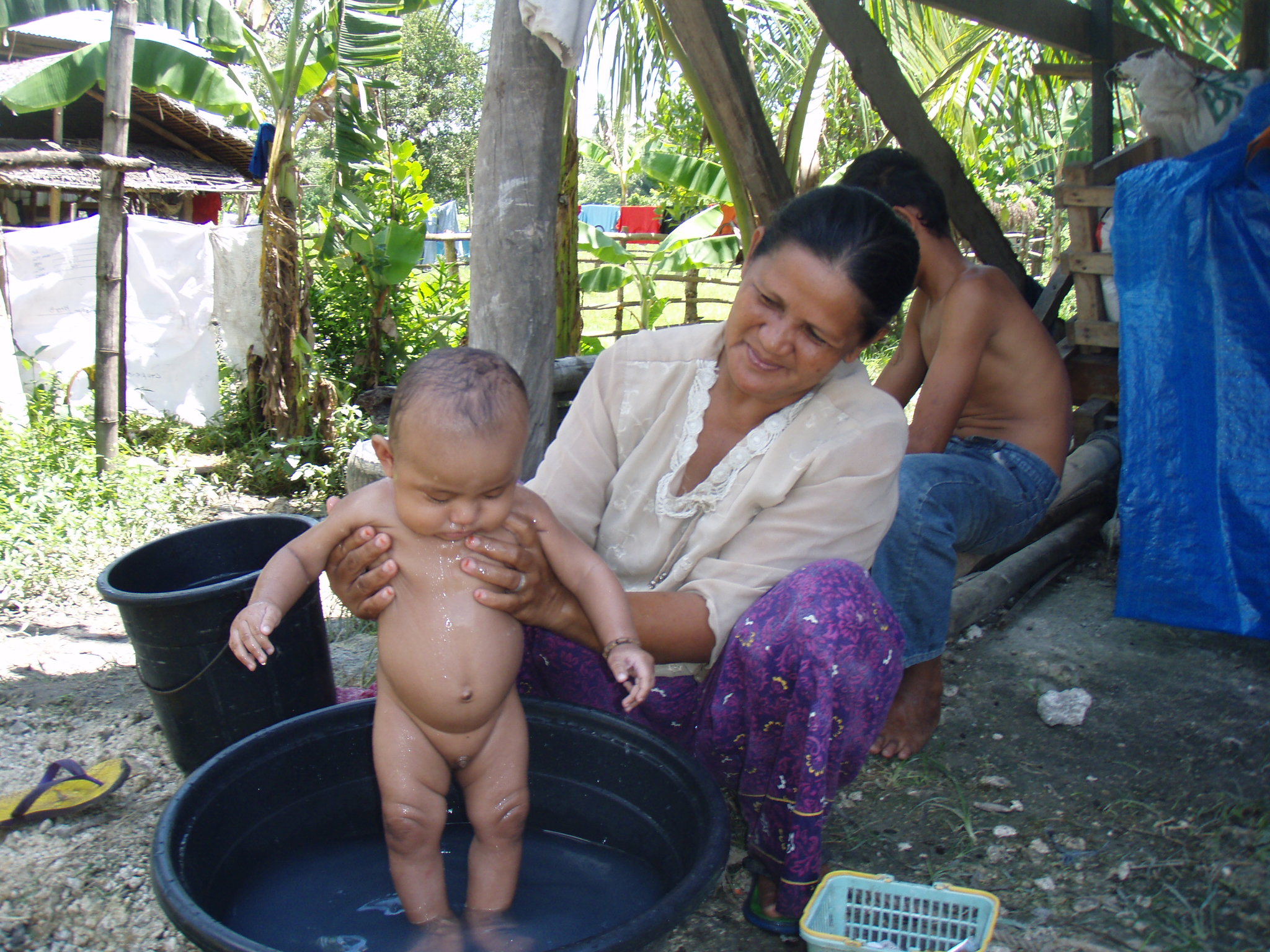Mindanao has witnessed an escalation in fighting between government forces and the Moro Islamic Liberation Front (MILF) since 10 August.
"I am very tired. When will it ever end?" asked Sumira Endosan, an evacuee in Datu Piang, North Cotabato Province.
According to the latest figures offered by the National Disaster Coordinating Council (NDCC), more than 300,000 people remain displaced because of the fighting.
Of this number, more than 61,000 are living in evacuation centres, putting additional strain on women.
In addition to extra responsibilities in the home, they now face increased health risks, and protection issues, including an increased risk of sexual violence.
"Bullets do not differentiate between genders, but it is the women who are expected to ensure the continuity of life. In conflict situations, their gender-based needs are often overlooked," an officer from Isis International, advocating women's participation in the peace process, told IRIN.
Pregnant and displaced
The cramped evacuation centres and lack of clean water are particularly worrying for pregnant women.
"This, and the lack of privacy, make it difficult to provide post-partum care and hygiene needs," said Elizabeth Samama, a provincial health officer.
There are more than 1,300 pregnant and lactating mothers in Datu Piang, Samama said.
"Two pregnant women died from multiple injuries from mortar shelling. One woman died from post-partum haemorrhage," she said.
To date, the Datu Piang rural health unit has handled more than 11 deliveries, as well as dozens of post-partum, neo-natal and pre-natal cases, excluding traditional births using "hilot" or massage.
As part of its response effort, the UN Population Fund (UNFPA) has started distributing reproductive health kits to rural midwives, with basic instruments essential for a safe and sterile delivery, to prevent infant mortality and post-partum death.
|
Photo: David Swanson/IRIN  |
| The road to Datu Piang, home to the largest number of displaced persons on the southern Philippine island of Mindanao |
While no incidents of sexual violence have been reported, this did not mean it was not happening, activists warned.
"We only get anecdotal accounts, most of the time not even from the complainants themselves, making it hearsay and gossip," said Raissa Jajurie, head of office for Saligan, an NGO engaged in developmental law in Mindanao, with fear and shame the primary factors for the silence.
"In conservative Muslim culture, this is a taboo subject. Women would be accused of bringing it upon themselves. Also, there is a fear that filing a complaint would cause retaliation and start a vicious clan war," Jajurie explained.
Trauma
"Women whose husbands are involved or have been killed in the conflict experience the worst trauma," Florence Tayzon, UNFPA's programme coordinator for the Philippines. "The economic consequences of losing the family breadwinner are compounded by the fear of vendetta and 'rido' or 'clan war', whose victims include women and children," she said.
In addition, when some of the displaced returned home, many found their animals and property stolen. With nothing to live on, some are forced back to evacuation centres.
Many men travel to look for work as daily labourers, so with daily income now erratic and their husbands away for days on end, many women have no choice but to take on added responsibility.
Some take on menial work, either as domestic servants or weaving, earning less than a US$1 a day.
Most of the displaced families lived below the poverty line before the conflict, according to government statistics. Today, many of them have to survive on considerably less - as little as $30 per month.
Fatima, a 20-year-old evacuee, supports seven siblings selling snacks for pennies a day.
"I used to make as much as 500 pesos [$10] per week. But with more evacuees now selling, I earn only about 300 pesos [$6] per week," Fatima said.
"There should be livelihood projects to assist the displaced in re-building. However, given the emergency state, the immediate needs of food and health remain the priority," said Isabelle Bucher, an economic security delegate from the International Committee of the Red Cross (ICRC).
as/ds/mw
This article was produced by IRIN News while it was part of the United Nations Office for the Coordination of Humanitarian Affairs. Please send queries on copyright or liability to the UN. For more information: https://shop.un.org/rights-permissions





